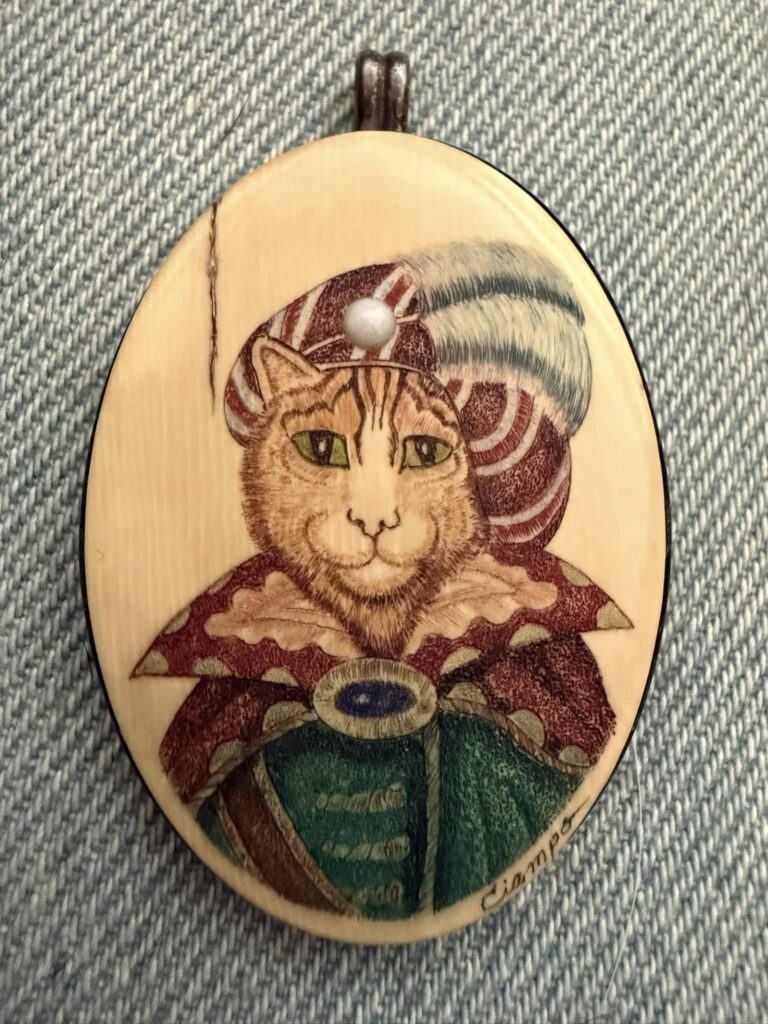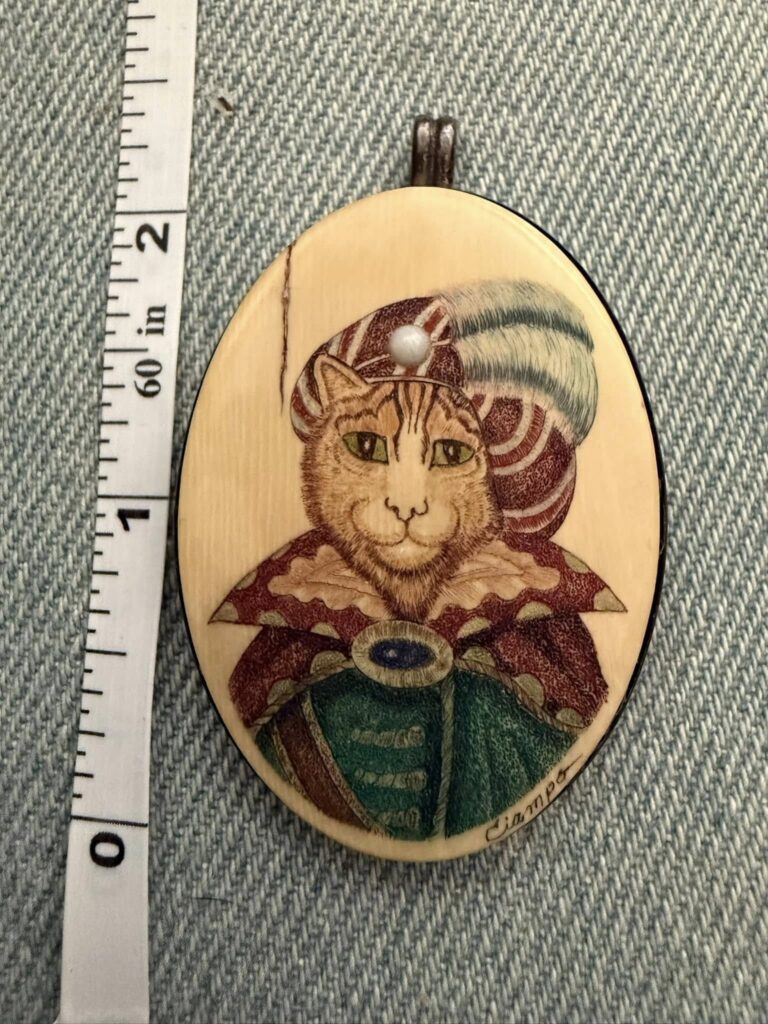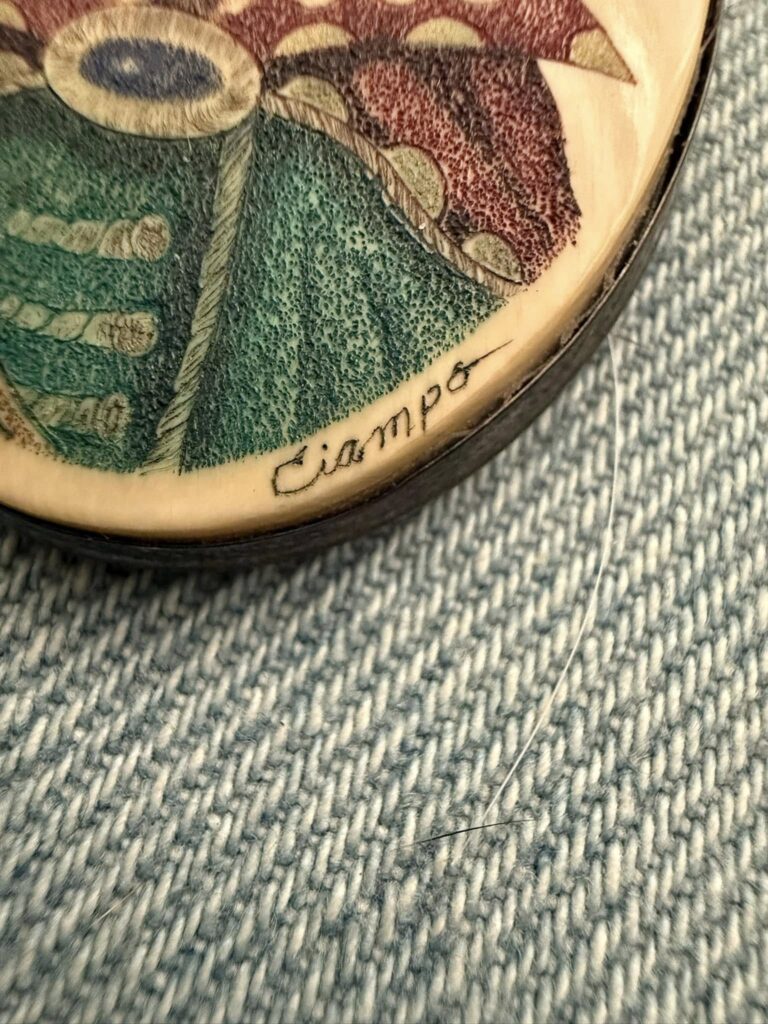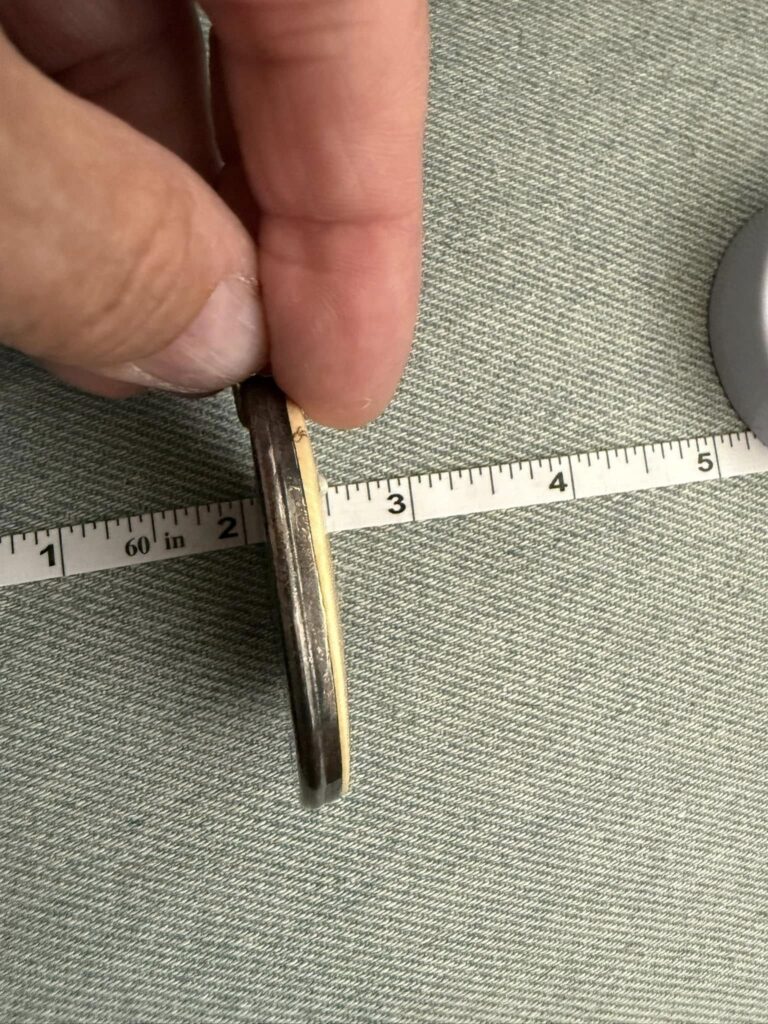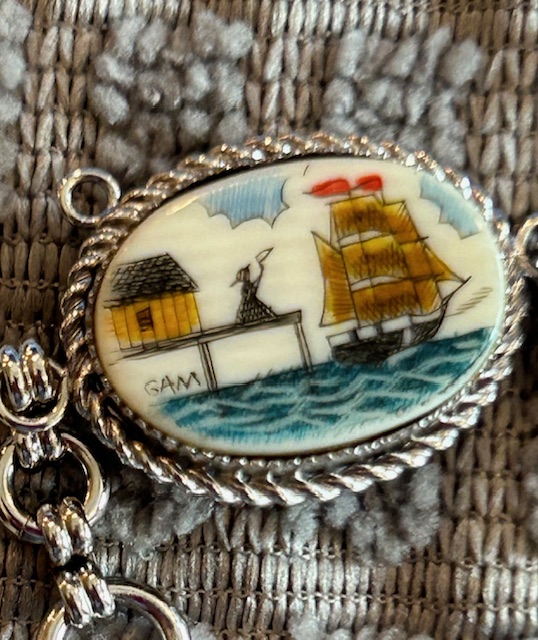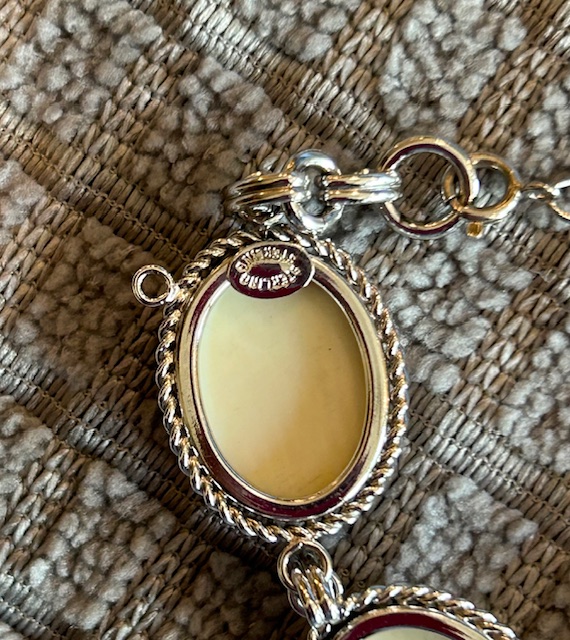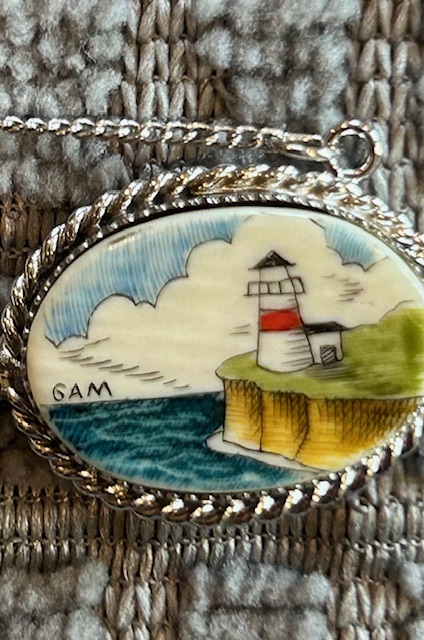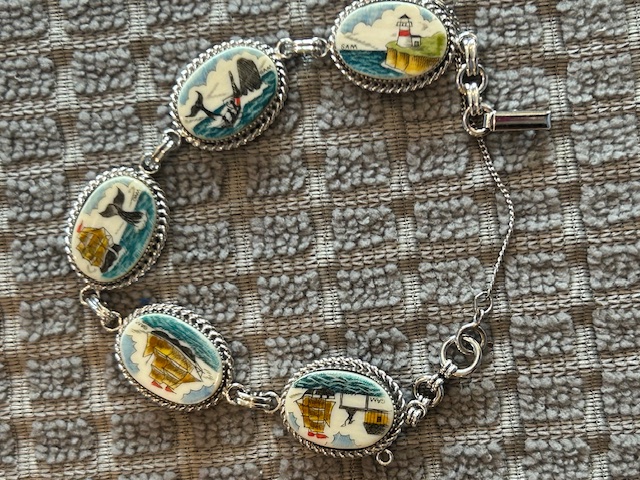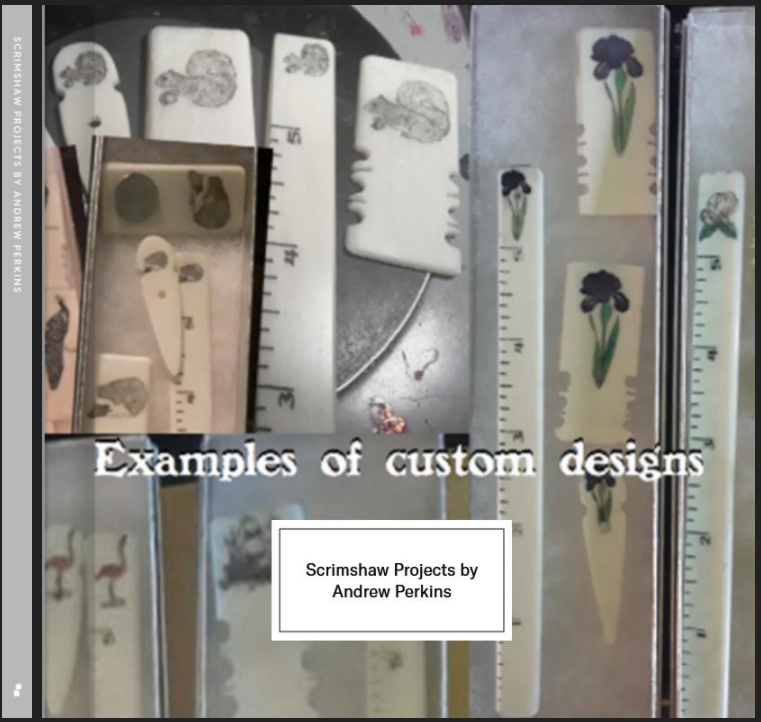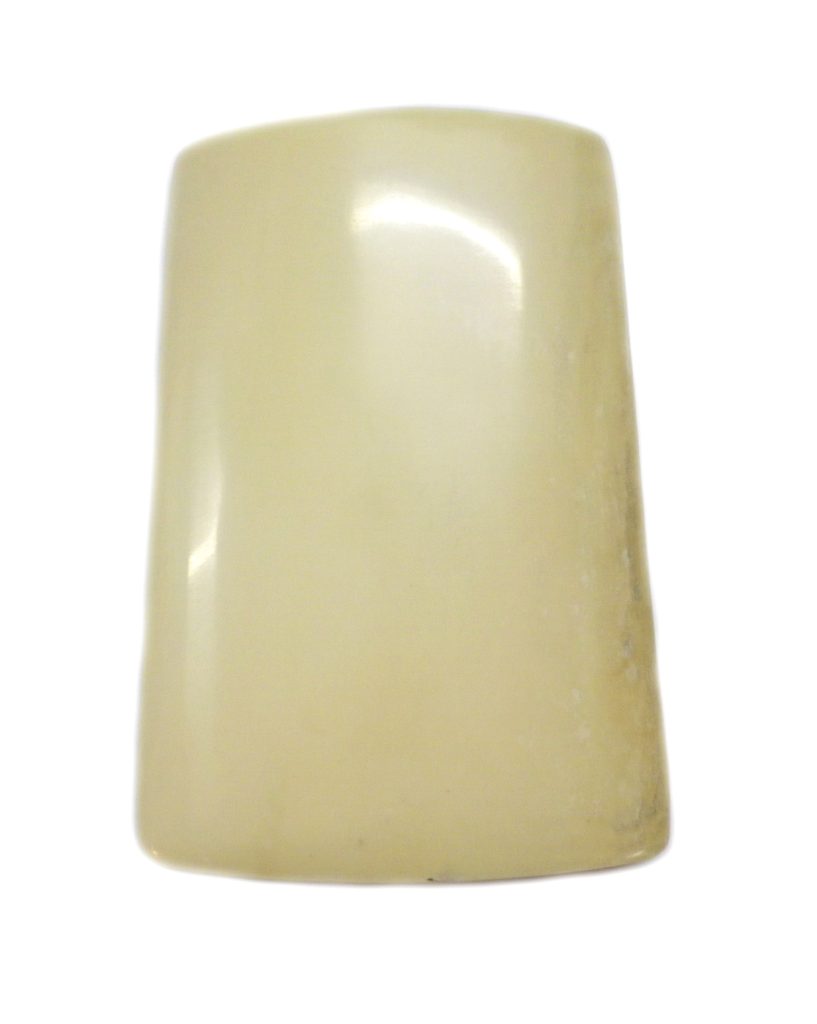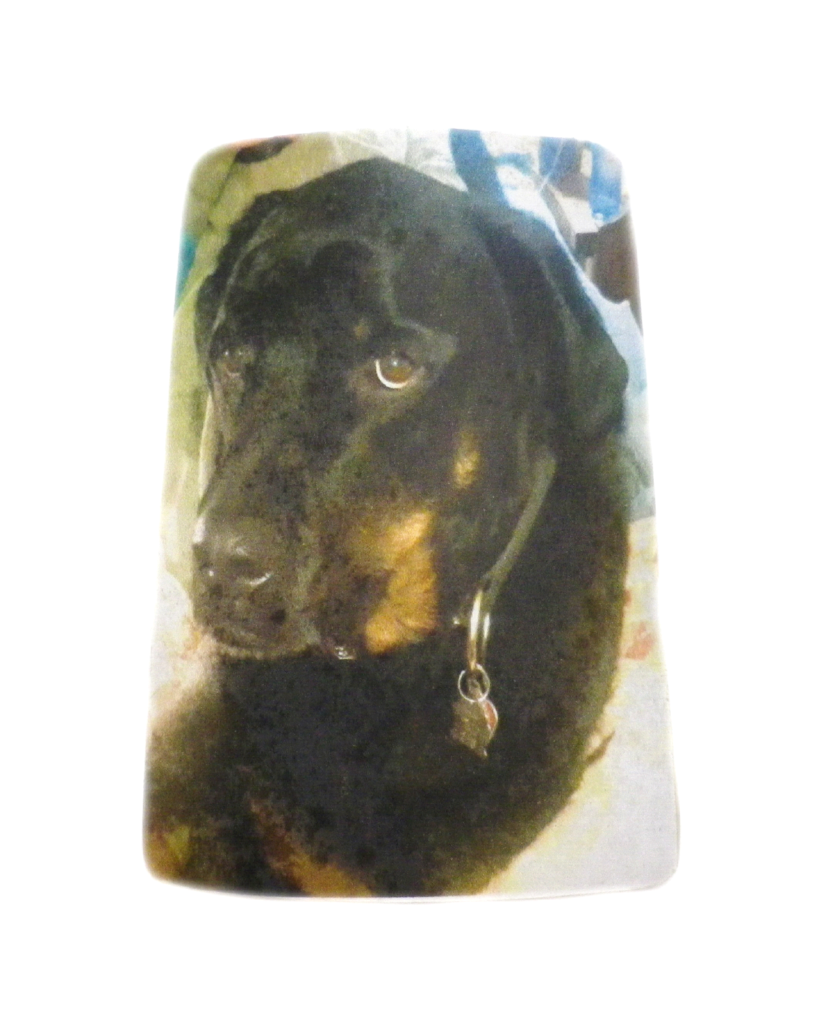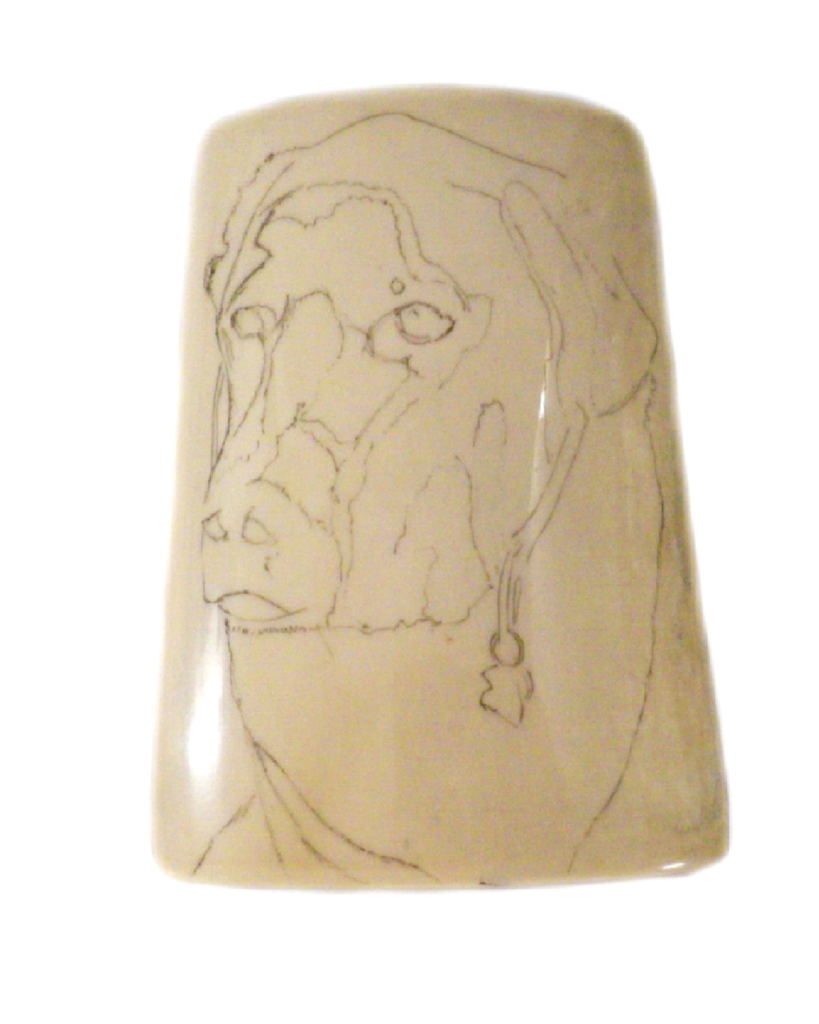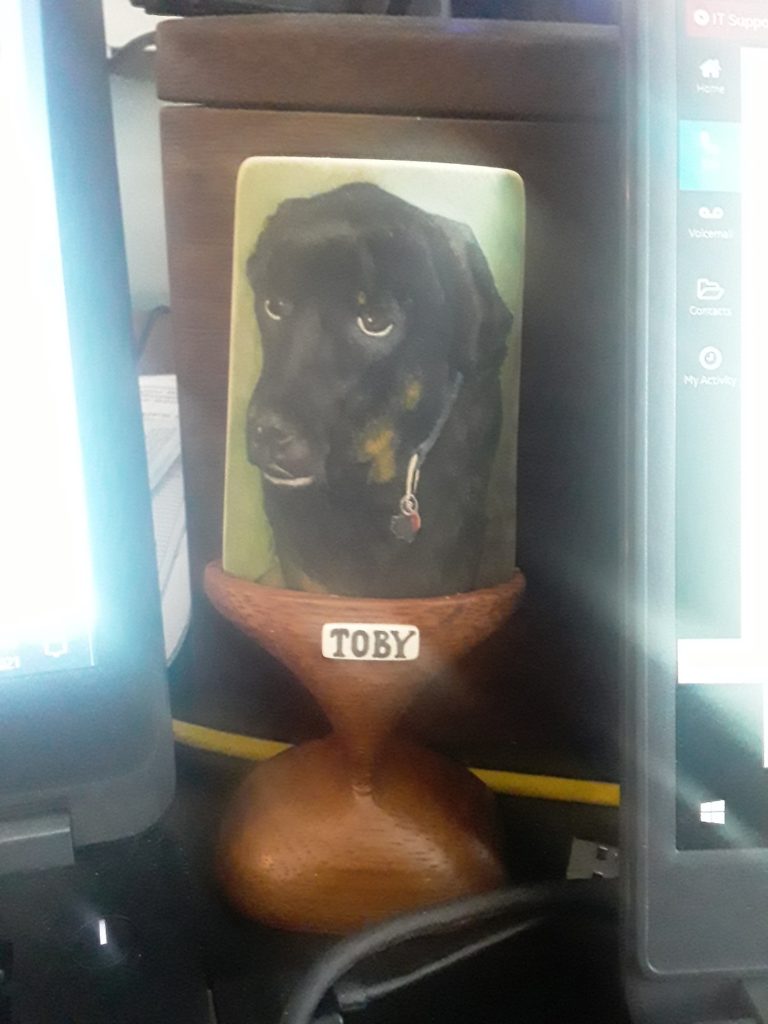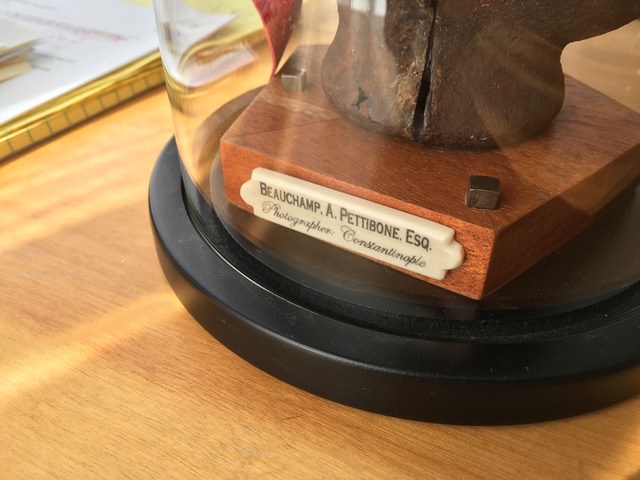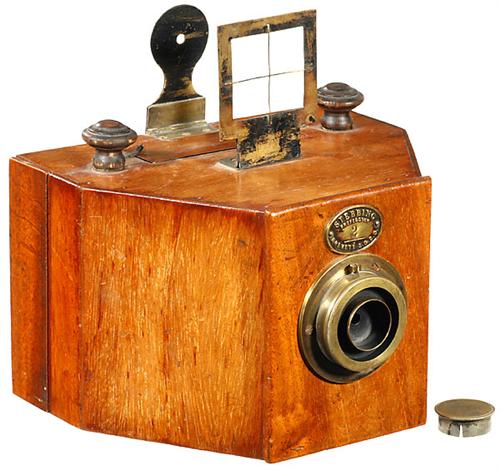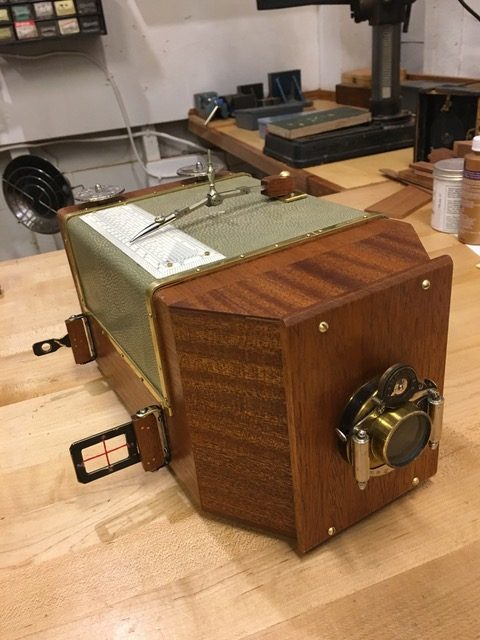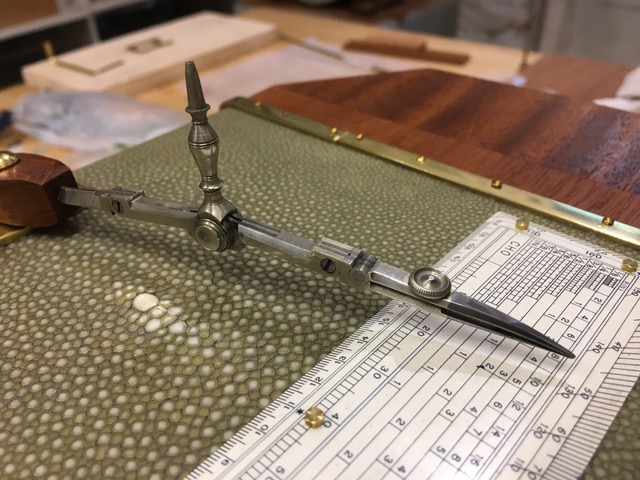Lisa is looking for more information on the artist who scrimmed “Puss-In-Boots” in the 1970’s:
“I came across your site and found your contact info in one of the Mystery Artist conversations. I was given a scrimshaw pendant made of “prehistoric fossilized ivory”, which was purchased by my dad at a gallery event back in the late 70’s – the show featured works from master scrimshander Michael Wood (at
Thrasher Galleries in San Carlos, CA – now closed). The pendant is set in “fine silver” and the stone in the hat is an opal. The signature on the bottom right side says “ciampo”. I have a flyer from the show stating it’s on prehistoric fossilized ivory (flyer photos attached). …
… Any chance you can find something out about this artist, or the pendant’s value?”
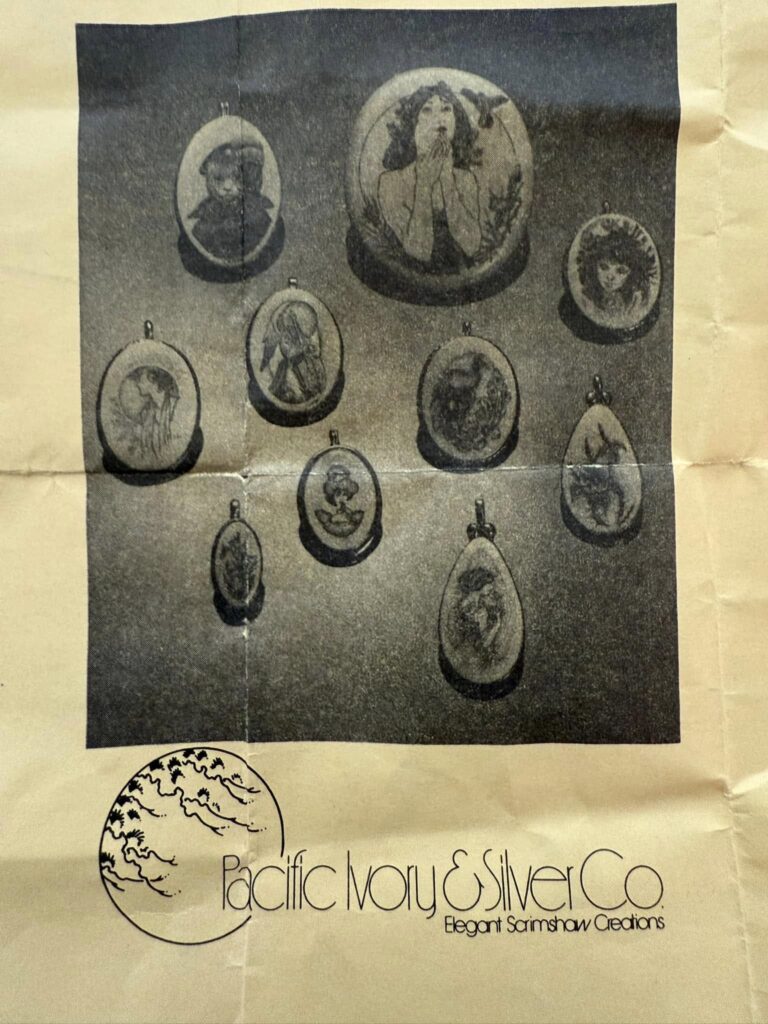
Anyone remember Ciampo or the Pacific Ivory & Silver Company? Leave your response below to help Lisa find out more about this unique treasure!
